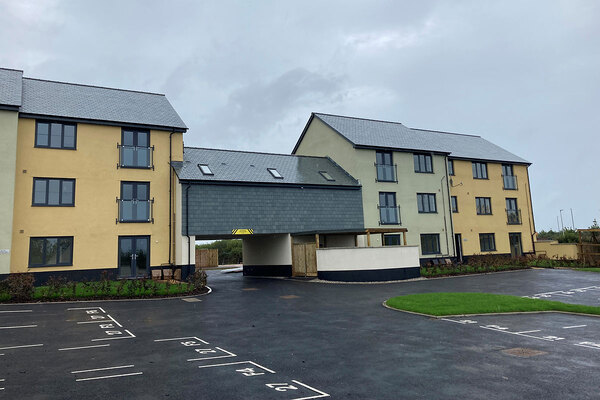You are viewing 1 of your 1 free articles
 Katie Saunders
Katie SaundersKatie has over 20 years of experience advising on construction contracts in the real estate sector. Katie is particularly known for her ...more
How truly committed is the government to investing in offsite?
Katie Saunders scrutinises the government’s Construction Sector Deal published earlier this month and looks at what it is likely to mean for the sector
The Construction Sector Deal, published by the Department for Business, Energy and Industrial Strategy, sets goals for the sector to deliver – which include producing better-performing buildings that are built more quickly and at a lower cost, and reducing energy use.
The goals are to be met by focusing on three strategic areas:
- Digital – including techniques deployed at all phases of design
- Offsite manufacturing – including technologies to help minimise the wastage, inefficiencies and delays that affect on-site construction
- Whole-life asset performance – which will shift focus from the costs of construction to the costs of building across its life cycle, particularly its use of energy
So what does this mean for the development of new build housing?
Trowers & Hamlins has been been working with housing providers, contractors and manufacturers across the country and we have identified a number of barriers which the government can help to unlock to create the step change necessary to encourage offsite manufacturing as a preferred option for both public and private sector house builders and developers.
These include:
- Reluctance for clients to collaborate and commit their development pipelines to manufacturers
- Insufficient incentives from government to use offsite manufacturing methods since costs are often still higher than a traditional build
- Limited research on life cycle costs and benefits of offsite manufactured products and consequently uncertainty and anxiety about the long-term maintenance of those homes for housing associations and local authorities
How does the deal address these issues?
There are a number of bold statements within the deal to embody the government’s commitment to housing but they are limited in their substance.
“The most positive comment in the deal is the commitment to improving the procurement process.”
The government has already made a presumption in favour of offsite construction by 2019 across its own capital programmes where it represents best value for money, but this is not related to development of housing and no further commitment has been made to make a presumption in favour of offsite manufacturing for housing.
The most positive comment in the deal is the commitment to improving the procurement process and enabling clients to assess the whole-life performance of assets and to optimise this performance.
This can tackle the uncertainty around how the completed home will perform over its life cycle and whether the ongoing maintenance of the asset will be more or less than a traditionally built home.
It is a step in the right direction, but how is this to be achieved?
The government has committed to embedding a ‘procure for value’ approach in public procurement and to work with the sector to develop consistent design and performance benchmarks for the design, construction and operation of build assets.
“The deal recommends developing a standard methodology to be used across the sector to drive the construction supply chain.”
Tools already exist within the procurement regulations to allow public sector clients to evaluate on life cycle costing, so what more can government offer to unlock this barrier?
The deal recommends developing a standard methodology to be used across the sector to drive the construction supply chain to focus on the performance of assets across their whole life and invest in the capability and skills needed to deliver this.
The standard methodology is to be supported by a single body of knowledge as a shared digital asset. The deal recognises that not only should products and projects be procured on a life cycle cost basis, but there should be a standard benchmarking approach to the performance of assets during design, construction and operation.
While this is generic aspiration across the sector, it is certainly in the offsite manufacturing market for housing products that this is most desperately needed.
However the deal still leaves key questions to be answered by the industry: who is to create the standard methodology to enable assessment of lifestyle costs and who is to develop the benchmarking approach?
Without comfort from manufacturers, suppliers and contractors, that their modern methods of construction will be as sustainable as a traditionally built project, the public sector will remain reluctant to commit more than a pilot programme to offsite manufactured housing.
Katie Saunders, partner, Trowers & Hamlins
Watch a timelapse video showing offsite homes being built in just two days at Housing 2018:












